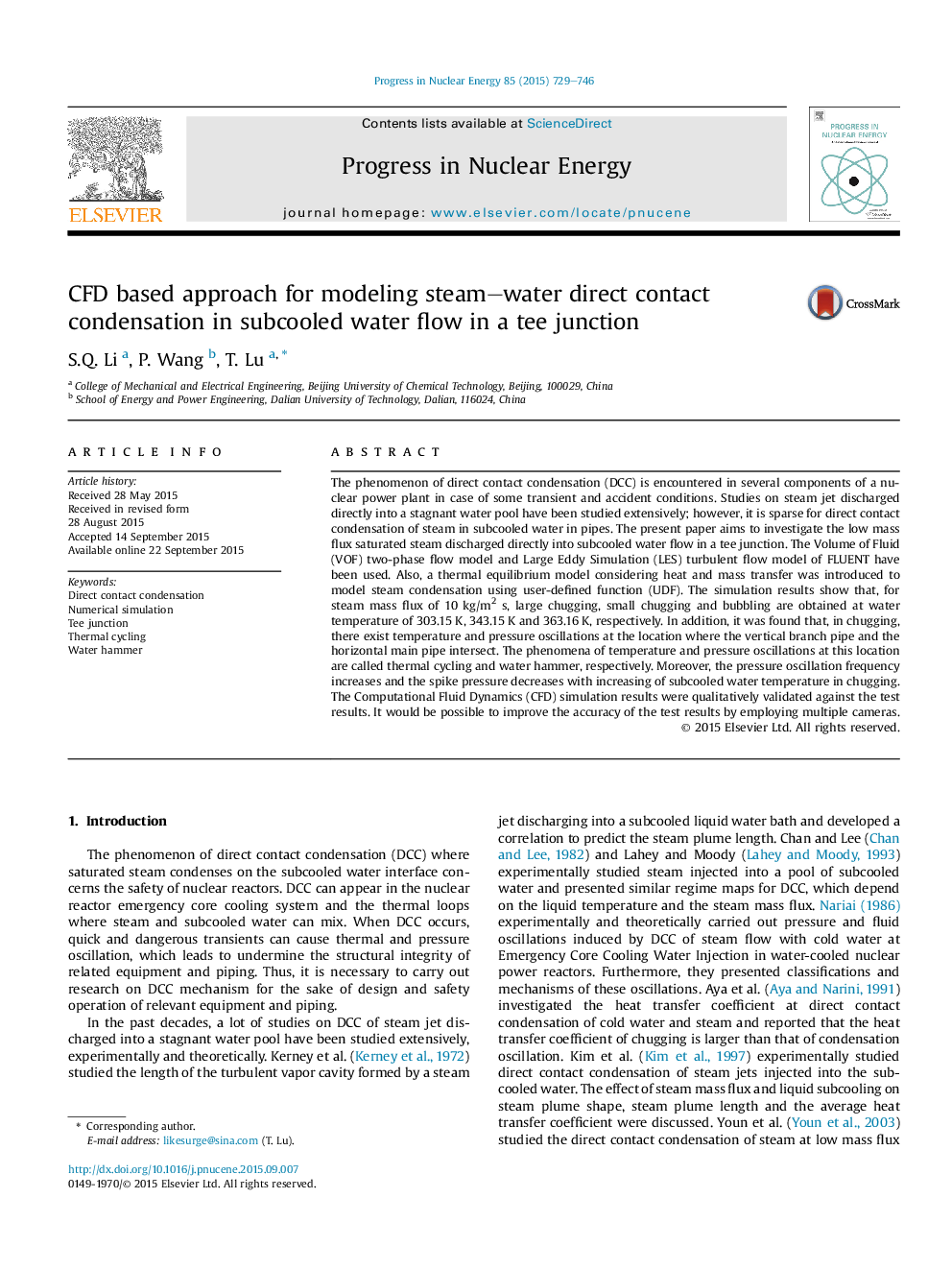| Article ID | Journal | Published Year | Pages | File Type |
|---|---|---|---|---|
| 8085345 | Progress in Nuclear Energy | 2015 | 18 Pages |
Abstract
The phenomenon of direct contact condensation (DCC) is encountered in several components of a nuclear power plant in case of some transient and accident conditions. Studies on steam jet discharged directly into a stagnant water pool have been studied extensively; however, it is sparse for direct contact condensation of steam in subcooled water in pipes. The present paper aims to investigate the low mass flux saturated steam discharged directly into subcooled water flow in a tee junction. The Volume of Fluid (VOF) two-phase flow model and Large Eddy Simulation (LES) turbulent flow model of FLUENT have been used. Also, a thermal equilibrium model considering heat and mass transfer was introduced to model steam condensation using user-defined function (UDF). The simulation results show that, for steam mass flux of 10Â kg/m2Â s, large chugging, small chugging and bubbling are obtained at water temperature of 303.15Â K, 343.15Â K and 363.16Â K, respectively. In addition, it was found that, in chugging, there exist temperature and pressure oscillations at the location where the vertical branch pipe and the horizontal main pipe intersect. The phenomena of temperature and pressure oscillations at this location are called thermal cycling and water hammer, respectively. Moreover, the pressure oscillation frequency increases and the spike pressure decreases with increasing of subcooled water temperature in chugging. The Computational Fluid Dynamics (CFD) simulation results were qualitatively validated against the test results. It would be possible to improve the accuracy of the test results by employing multiple cameras.
Related Topics
Physical Sciences and Engineering
Energy
Energy Engineering and Power Technology
Authors
S.Q. Li, P. Wang, T. Lu,
